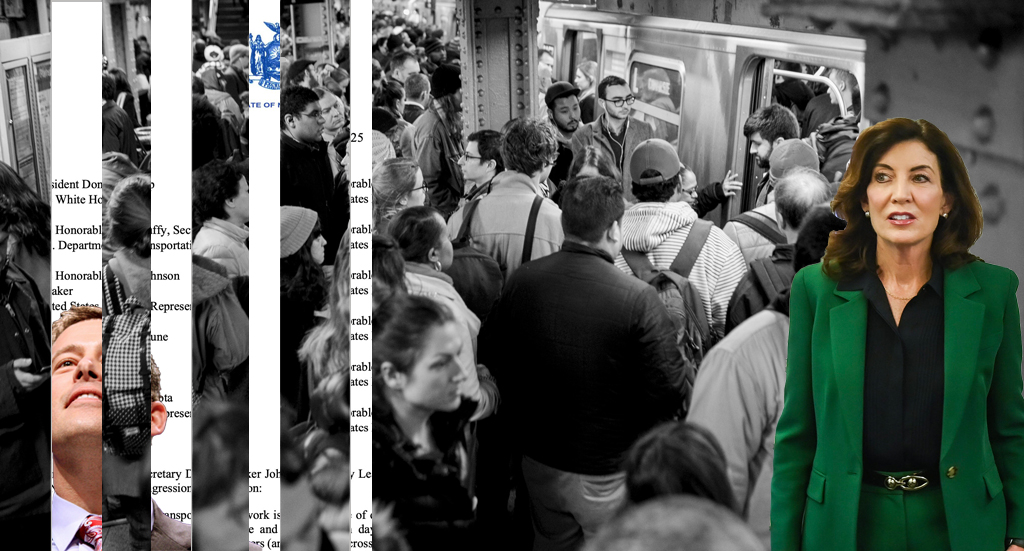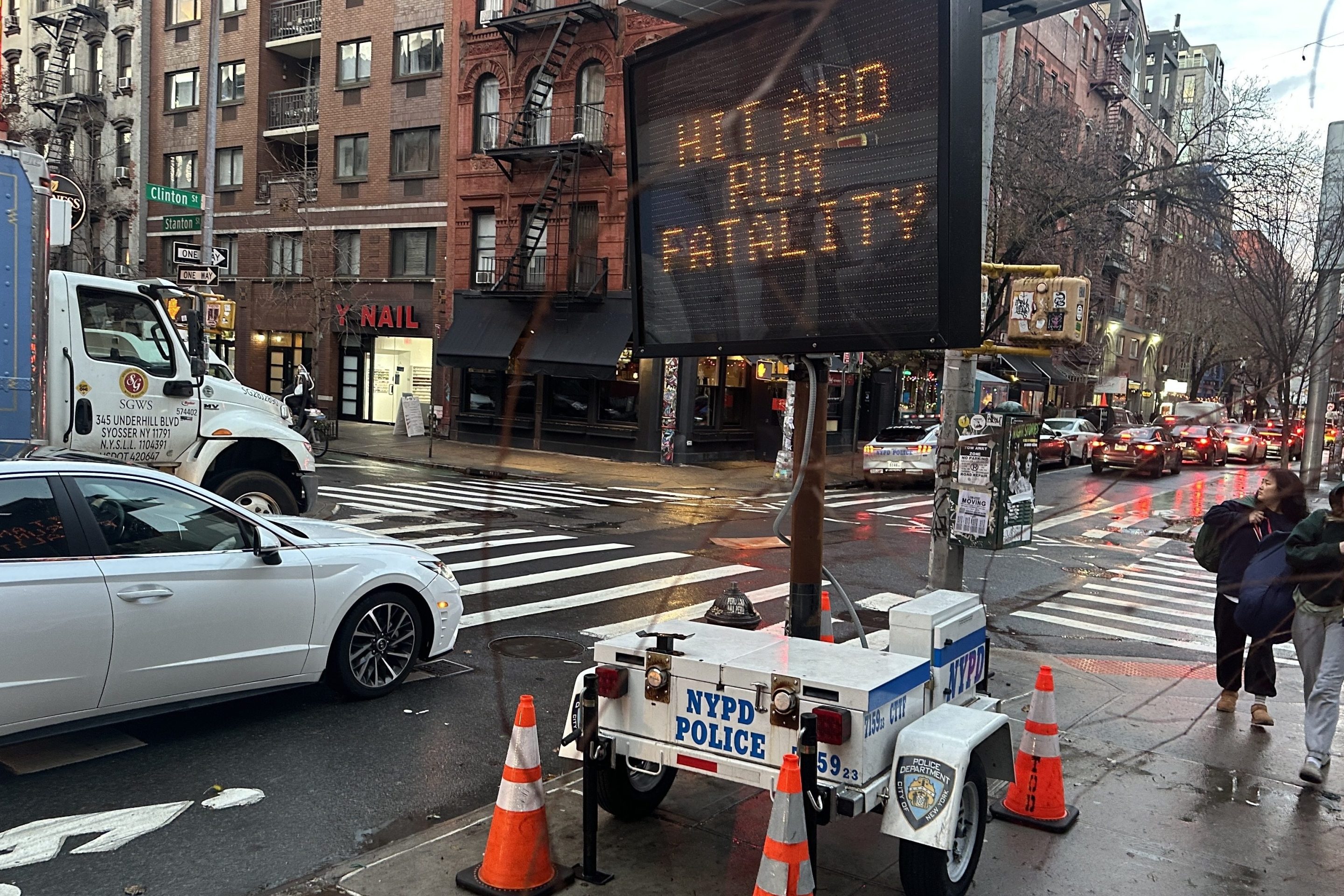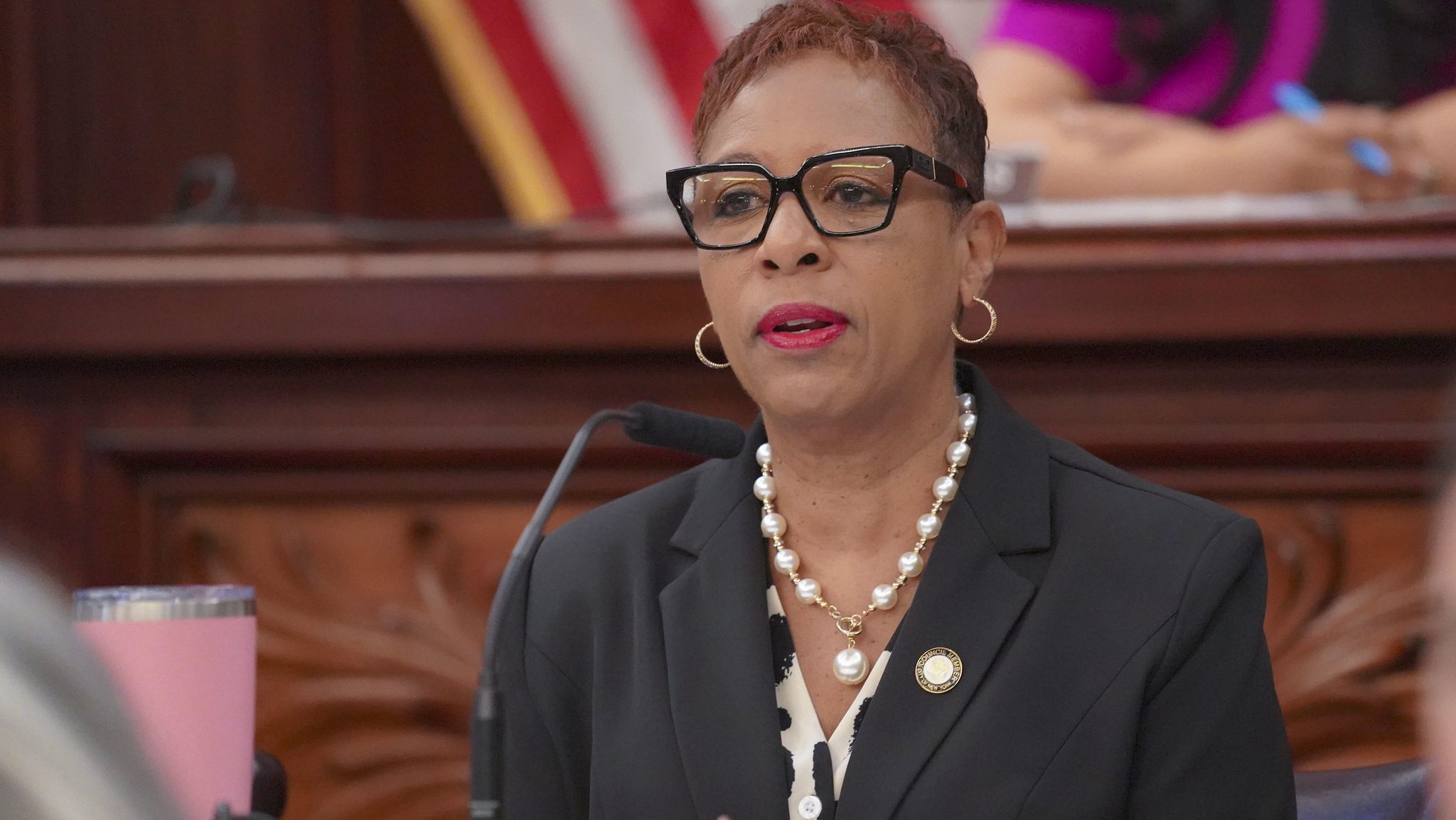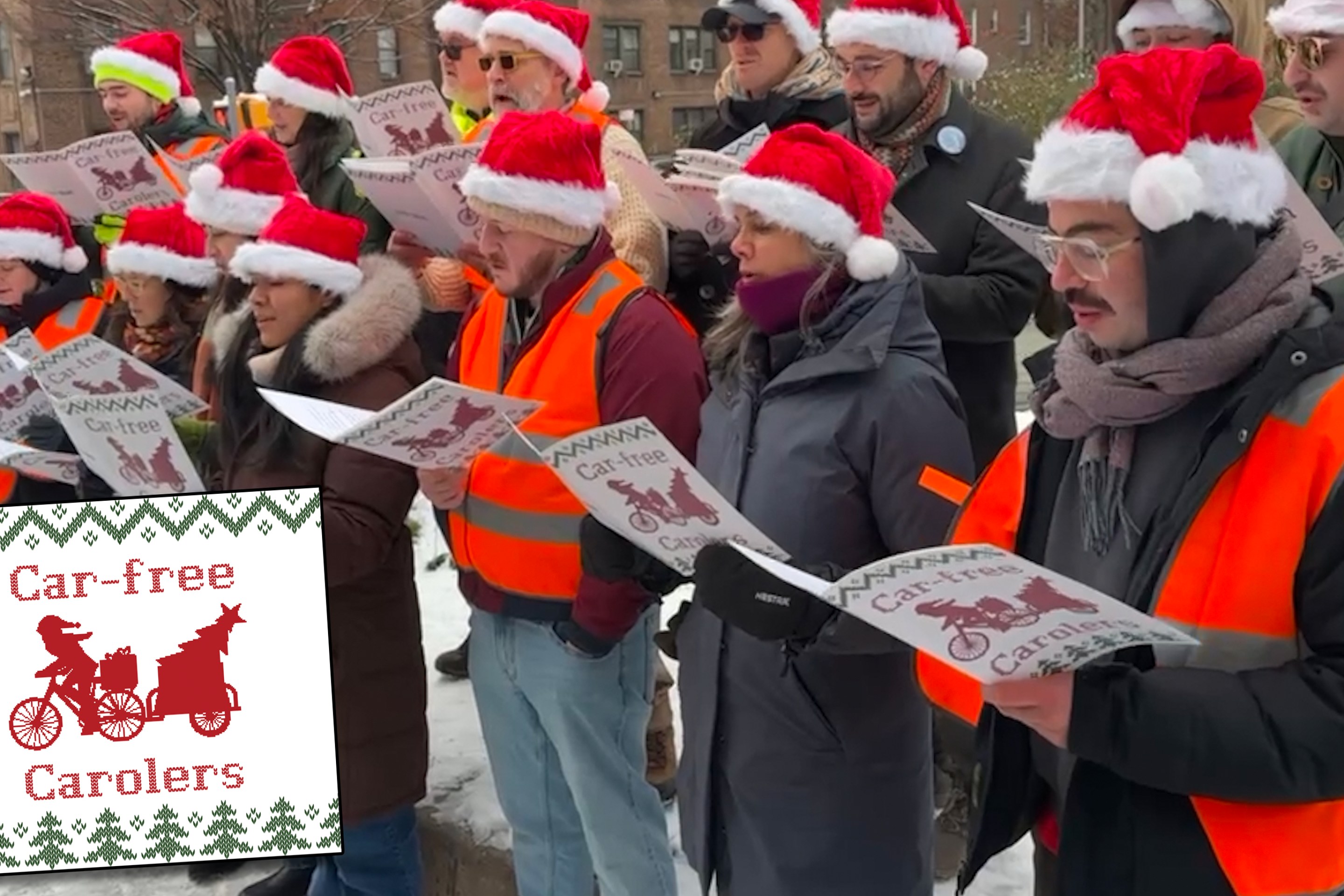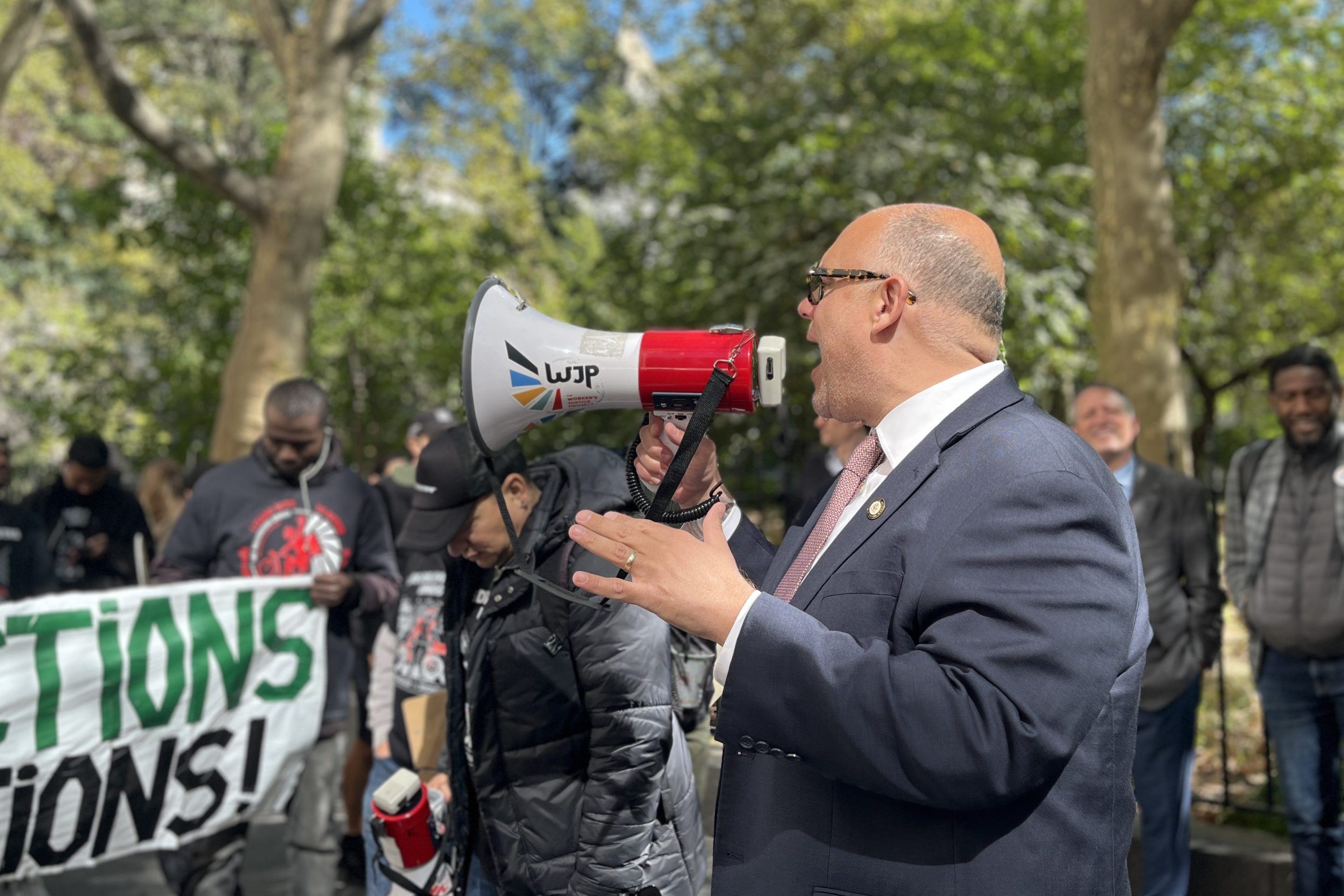ALBANY — Too quiet on the northern front.
The halls of the state capitol were filled with dread on Tuesday as neither Gov. Hochul nor legislative leaders have a plan to fill the yawning funding gap in the MTA's renovation and expansion plan — and then flailed by sending a plaintive request for funding from the federal government that was immediately stamped "dead on arrival" in the form of a single desultory tweet from U.S. DOT Secretary Sean Duffy.
So with just one week before the April 1 budget deadline, transit riders in the nation's most important economic region face another "Summer of Hell" of declining subway service and safety.
A day of non-reckoning
The day started with MTA and transit advocates making their case to fill what is a $35-billion hole in the proposed $68-billion 2025-29 capital plan. That funding hole exists the plan that was approved by the MTA Board last year only identified $34 billion (and change) in funding, comprising $13.1 billion from the feds, $10 billion from bonds backed by MTA fares, $3 billion from toll-backed bonds, and $4 billion each from New York State and New York City (which has since been reduced by the governor and legislature to $3 billion each).
Just $3 billion more in annual revenue would be enough for the agency to issue bonds to cover the funding gap for the next five-year plan. But so far, the only proposal that has been floated among Gov. Hochul, Senate Majority Leader Andrea Stewart-Cousins or Assembly Speaker Carl Heastie has been a late-in-the-game Hochul proposal to raise payroll taxes on New York City businesses.
That's also DOA for city lawmakers because suburban businesses in the MTA service area were cut out of a payroll tax hike as part of a deal just two years ago to bolster MTA operating funds.
"The last time, we did it with New York City only," Assembly Member Micah Lasher (D-Manhattan) said at a rally on Tuesday. "That's obviously not fair for the residents of New York City. It doesn't invest in the idea of the system as a regional system, with regional benefits and regional investments. And so my hope is that as we continue the conversation about how to fund the MTA capital plan, we do it in a way that calls upon all the residents of the state who benefit from this extraordinary system to take part in investing in its future."
Lasher's comments were timely, given a new report from Reinvent Albany and the NYU Marron Institute of Urban Management that showed just how much the New York City suburbs have benefitted from previous MTA capital plans.
Even though New York City has provided 93 percent of the MTA's total ridership between 2000 and 2024, it's received 71 percent of the total capital plan funding in that time. Meanwhile, Long Island has provided just 3 percent of total ridership for the system, but has received 19 percent of the capital funding in the 21st century, thanks in part to megaprojects like the Main Line Expansion and East Side Access.
In other words, Long Island and the northern suburbs will clearly be targeted to contribute more.
The state of play
The 2025-29 plan has been in in limbo since Christmas Eve, when Stewart-Cousins and Heastie vetoed it, saying they were concerned about what was at the time a $33-billion funding hole (now $35 billion because they agreed to shrink the direct city and state contributions).
Since then, the governor and both houses of the Legislature have been engaged in a staring contest over who will actually propose a revenue plan.
Talking to reporters on Tuesday, Heastie admitted that he still hadn't blinked, but he said he had told MTA Chairman Janno Lieber that the capital plan was going to be funded.
"I haven't discussed all of the options with the members yet, but I'm fully confident that we'll figure out how we could fund the MTA," he said. "I discussed with [Janno] that we will make sure that the MTA capital plan is funded. I didn't disclose with him how we plan to do it, because we don't have a solid plan yet. I just gave him assurance."
Budget negotiators have also kept a tight lid on talks around the possible measures to fund the capital plan, but it's unclear whether that silence is due to a lack of ideas bouncing around the proverbial smoke-filled rooms or simply because no one wants to mention the "T" word.
Stepping into the void, nonpartisan budget analysts at the Fiscal Policy Institute issued its own report this week arguing there are tax levers to pull that aren't the payroll tax — for instance, raising the corporate tax surcharge, which already goes towards the MTA.
The report also suggests the state could muck around with a pair of other taxes. First, the state could stop exempting the payment on "global intangible low-taxed income," which the report explains is a tax on "additional corporate tax on highly profitable foreign subsidiaries of US corporations that own valuable intangible assets such as intellectual property." The report argues that the end of said exemption could raise at least $1 billion per year.
Second, the state could lower its current 100-percent rebate on the pass-through entity tax.The PTET is a tax gimmick that New York and other states use to allow high-income taxpayers to still effectively enjoy a full state and local tax deduction, which was capped at $10,000 by President Trump in 2017. Reducing the rebate to 87 percent from the full 100 percent could raise up to $2 billion every year, the report says.
Why it matters, Sean
Lieber was in Albany on Tuesday to talk to legislators (and a broader audience in Washington) about what the plan means for the transit system. Yes, he said, he has received assurances by the governor, majority leader and Speaker that the capital plan would be funded, but Lieber expressed the same frustration he did in February that the need to fund the capital plan every five years always seems to take legislators by surprise.
"I do believe that when people talk about the MTA capital program, to treat like it's some kind of budget bailout is slightly ridiculous, because this is predictable," said Lieber. "It is as essential as Medicare. It's as essential as education, and it ought to be provided for in the overall context of a $250-billion budget, not treated like some surprise add on."
Hochul, Stewart-Cousins and Heastie did make a play for additional federal funding, with a letter to President Trump and U.S. Transportation Secretary Sean Duffy, in which the trio laid out their case in normal, factual terms. For instance, the letter reminded the new Transportation secretary, that the MTA carries 43 percent of public transit riders in the United States, yet receives only 17 percent of federal formula funding for transit.
Duffy's response — a tweet! — appeared to be, "Yeah, so...?

"Gov. Hochul is asking for MORE money for the horribly run MTA," he said, forgetting that all transit-dependent cities get federal funding.
"The MTA is running a deficit thanks to NY’s financial mismanagement," he added, forgetting that all municipal transit systems fail to make a profit.
He reiterated his recent attacks on the subway as crime-ridden and (in his words) a "shithole."
"Before we make any changes to funding decisions, we’d like to see their plan to make the subway reliable, secure, and clean," he wrote. "The federal government is not a blank check, and we will hold NYC leaders accountable for not keeping commuters safe."
A Hochul spokesman suggested that Duffy needs to get his facts straight.
"Before Gov. Hochul took office, decades of state and federal disinvestment had pushed New York's public transit system to its breaking point," said spokesperson Avi Small. "But under Gov. Hochul's leadership, the MTA has turned the corner: ridership is going up, crime rates are plummeting and the 'fiscal cliff' has been averted. New York is doing our part to improve public transit — now it's time for federal officials to step up to the plate, do their part and give New York our fair share of federal dollars."
